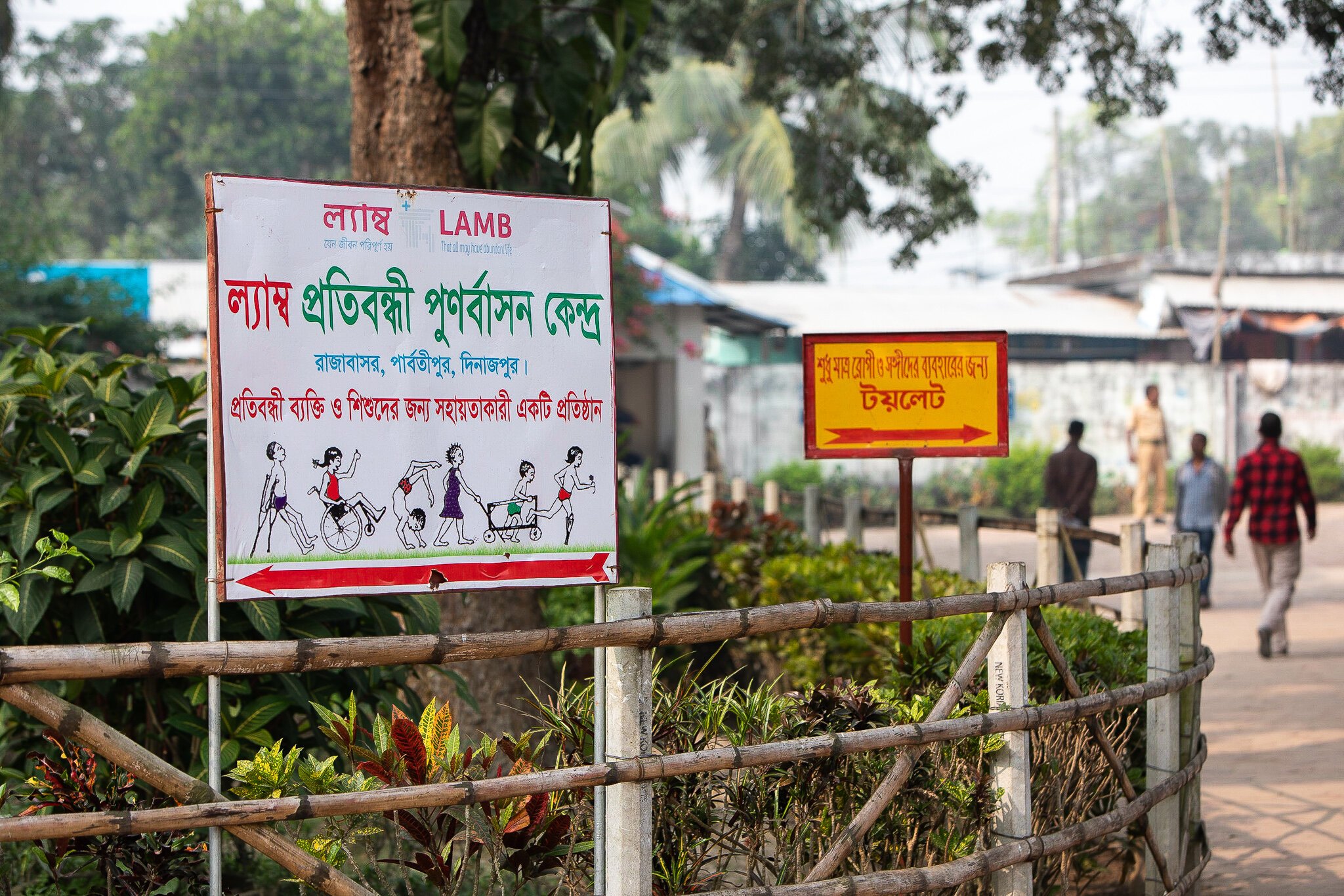
Brief history
Mid 1950s – The Beginning
The vision for LAMB began when Mr. John Otteson, from the American Santal Mission in Dinajpur, felt an urgent need for medical work for the hundreds of thousands who had no access to proper health care. The vision was developed further through a prayer group in Los Angeles.
1969 - Mid 1970s – The Vision & Land to build it on
The early vision was of a hospital providing high quality tertiary, secondary and primary health services to everyone, especially the poor. From the earliest days, training was envisaged as a key activity. And before the hospital was established preventative health initiatives were also included.
The land to build LAMB was purchased between 1969 and 1972.
1976 – Registration
LAMB officially began when we registered with the Ministry of Social Welfare. The first programmes were a small clinic at the LAMB site and mobile clinics in several villages. The Community Health division soon expanded to include sanitation programmes, health teaching and literacy, and other preventive health and community development programmes.
1983 – Opening
The 50-bed hospital opened in October 1983.
1980 - 1995 – Community Activity
The LAMB Community Health and Development Programme (CHDP) expanded working areas with health promotion, disease prevention, mobile clinics, functional literacy education, income generation and training programmes.
In the late 1980’s the Tuberculosis programme began.
LAMB’s relationship with PLAN International started in 1994, with LAMB sub-contracting health services for mobile clinics and health teaching.
A disability rehabilitation and nutrition facility was also opened in 1994, along with a community disability programme.
1996-7 – Governance Revised
To reflect the changing external environment LAMB restructured governance from a traditional mission with parent agency oversight (World Mission Prayer League, WMPL USA) to an NGO accountable to its own International Board.
1996-97 – Community Health Expansion
Services for the community increased dramatically in quantity and quality with receipt of the first DFID grant running from 1996-2001. The relationship with PLAN International broadened to a partnership.
During this time initial planning was started to transition from mobile clinics to fixed-site community clinics, which first opened in 1998.
1998 – Hospital Expansion
With help from PLAN International, DFID and WMPL, LAMB increased the size of the hospital to 75 beds.
2005-07 – Training Centre, Fistula Care and Paediatric Wards
After receiving training in Addis Ababa, Ethiopia in 2005, LAMB Obs-Gynae doctors began restorative surgery for women affected by difficult deliveries, funded by EngenderHealth and USAID.
With financial support from the Japanese Government, a large new Training Centre was constructed and opened in 2006.
Help from Engender Health and USAID enabled LAMB Hospital to add a fistula care ward and convert offices into a paediatric ward. With the new wards the hospital reached a new maximum capacity of 100 beds.
2008-09 – Adolescent Reproductive Health & School Expansion
Awareness raising to reduce fear among adolescents of physical changes was introduced. The programme also focused on reducing vulnerability to, and impact from, early marriage, child bearing and dowry.
Subsequent projects continue to engage adolescents, parents, teachers, local decision-makers and influencers to make social changes that ensure girls and women are increasingly valued, educated, and healthy.
The LAMB English-Medium School was expanded and the first students were preparing for their O-level exams.
2010-12 – Research Projects
A 3 year research project studying Prolonged Labor/ Birth Asphyxia ended in December 2010.
Pilot research laid groundwork for a project to improve feeding practices in children less than 2 years of age, organised by Alive and Thrive.
A 5 year nutrition supplementation comparative research programme through University of California began.
2010-19 Disaster Resilience
To help people withstand natural disasters of flood and drought in a cost efficient way a Disaster Risk Reduction programme was developed through Tearfund UK.
During and after severe North West Bangladesh flooding in 2017 and 2019, other partners, including UNFPA and LAMB Health UK, supported health camps focused on flood-related and sexual and reproductive health needs.
2010-19 – Integrated Health and Community Development
A number of different projects have benefited from LAMB’s extensive experience in managing local health services with household to clinic to hospital continuum of care. Including, Government clinics providing reproductive health and pregnancy care through community facility-based skilled birth attendants. The projects have been funded through UNICEF, Plan International, KOICA, and Women’s Hope International.
